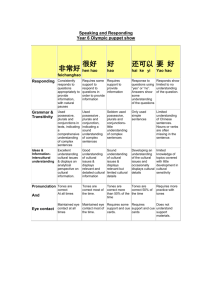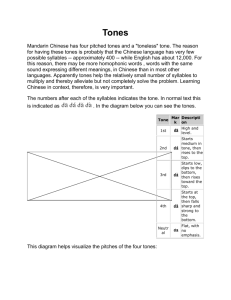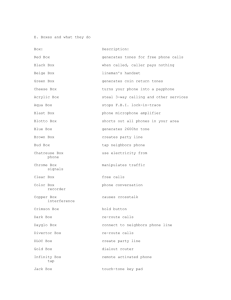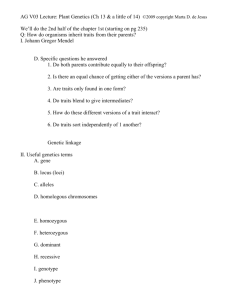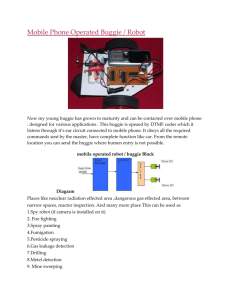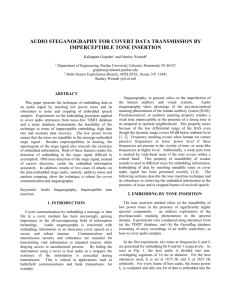Pre Test Excerpt
advertisement
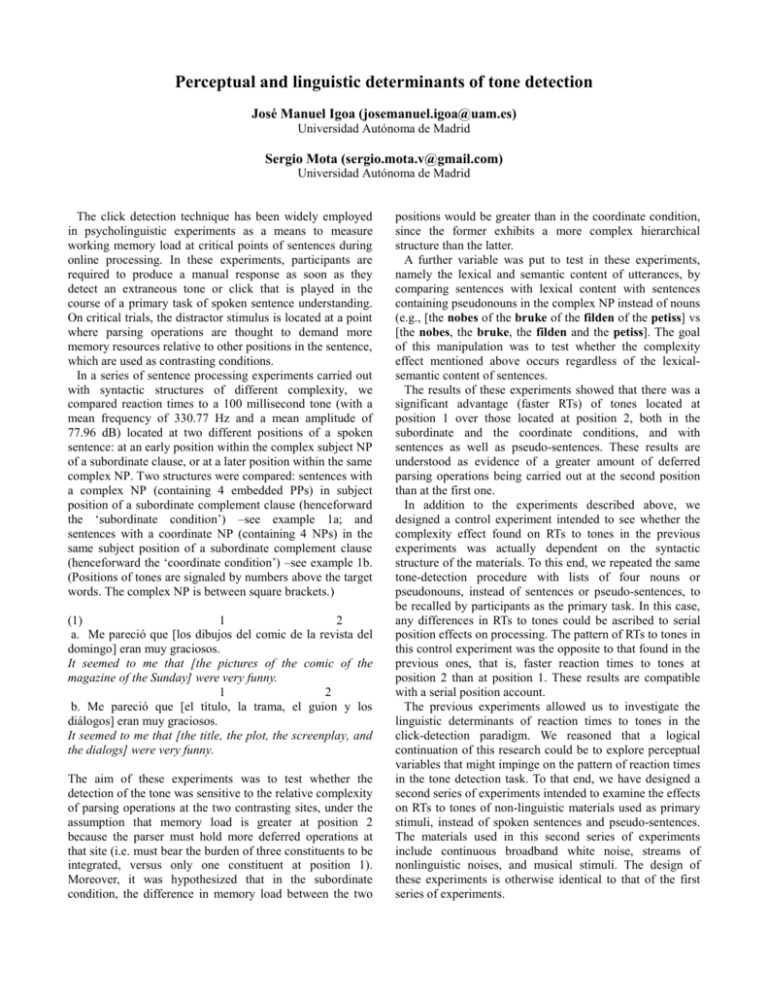
Perceptual and linguistic determinants of tone detection José Manuel Igoa (josemanuel.igoa@uam.es) Universidad Autónoma de Madrid Sergio Mota (sergio.mota.v@gmail.com) Universidad Autónoma de Madrid The click detection technique has been widely employed in psycholinguistic experiments as a means to measure working memory load at critical points of sentences during online processing. In these experiments, participants are required to produce a manual response as soon as they detect an extraneous tone or click that is played in the course of a primary task of spoken sentence understanding. On critical trials, the distractor stimulus is located at a point where parsing operations are thought to demand more memory resources relative to other positions in the sentence, which are used as contrasting conditions. In a series of sentence processing experiments carried out with syntactic structures of different complexity, we compared reaction times to a 100 millisecond tone (with a mean frequency of 330.77 Hz and a mean amplitude of 77.96 dB) located at two different positions of a spoken sentence: at an early position within the complex subject NP of a subordinate clause, or at a later position within the same complex NP. Two structures were compared: sentences with a complex NP (containing 4 embedded PPs) in subject position of a subordinate complement clause (henceforward the ‘subordinate condition’) –see example 1a; and sentences with a coordinate NP (containing 4 NPs) in the same subject position of a subordinate complement clause (henceforward the ‘coordinate condition’) –see example 1b. (Positions of tones are signaled by numbers above the target words. The complex NP is between square brackets.) (1) 1 2 a. Me pareció que [los dibujos del comic de la revista del domingo] eran muy graciosos. It seemed to me that [the pictures of the comic of the magazine of the Sunday] were very funny. 1 2 b. Me pareció que [el título, la trama, el guion y los diálogos] eran muy graciosos. It seemed to me that [the title, the plot, the screenplay, and the dialogs] were very funny. The aim of these experiments was to test whether the detection of the tone was sensitive to the relative complexity of parsing operations at the two contrasting sites, under the assumption that memory load is greater at position 2 because the parser must hold more deferred operations at that site (i.e. must bear the burden of three constituents to be integrated, versus only one constituent at position 1). Moreover, it was hypothesized that in the subordinate condition, the difference in memory load between the two positions would be greater than in the coordinate condition, since the former exhibits a more complex hierarchical structure than the latter. A further variable was put to test in these experiments, namely the lexical and semantic content of utterances, by comparing sentences with lexical content with sentences containing pseudonouns in the complex NP instead of nouns (e.g., [the nobes of the bruke of the filden of the petiss] vs [the nobes, the bruke, the filden and the petiss]. The goal of this manipulation was to test whether the complexity effect mentioned above occurs regardless of the lexicalsemantic content of sentences. The results of these experiments showed that there was a significant advantage (faster RTs) of tones located at position 1 over those located at position 2, both in the subordinate and the coordinate conditions, and with sentences as well as pseudo-sentences. These results are understood as evidence of a greater amount of deferred parsing operations being carried out at the second position than at the first one. In addition to the experiments described above, we designed a control experiment intended to see whether the complexity effect found on RTs to tones in the previous experiments was actually dependent on the syntactic structure of the materials. To this end, we repeated the same tone-detection procedure with lists of four nouns or pseudonouns, instead of sentences or pseudo-sentences, to be recalled by participants as the primary task. In this case, any differences in RTs to tones could be ascribed to serial position effects on processing. The pattern of RTs to tones in this control experiment was the opposite to that found in the previous ones, that is, faster reaction times to tones at position 2 than at position 1. These results are compatible with a serial position account. The previous experiments allowed us to investigate the linguistic determinants of reaction times to tones in the click-detection paradigm. We reasoned that a logical continuation of this research could be to explore perceptual variables that might impinge on the pattern of reaction times in the tone detection task. To that end, we have designed a second series of experiments intended to examine the effects on RTs to tones of non-linguistic materials used as primary stimuli, instead of spoken sentences and pseudo-sentences. The materials used in this second series of experiments include continuous broadband white noise, streams of nonlinguistic noises, and musical stimuli. The design of these experiments is otherwise identical to that of the first series of experiments.

